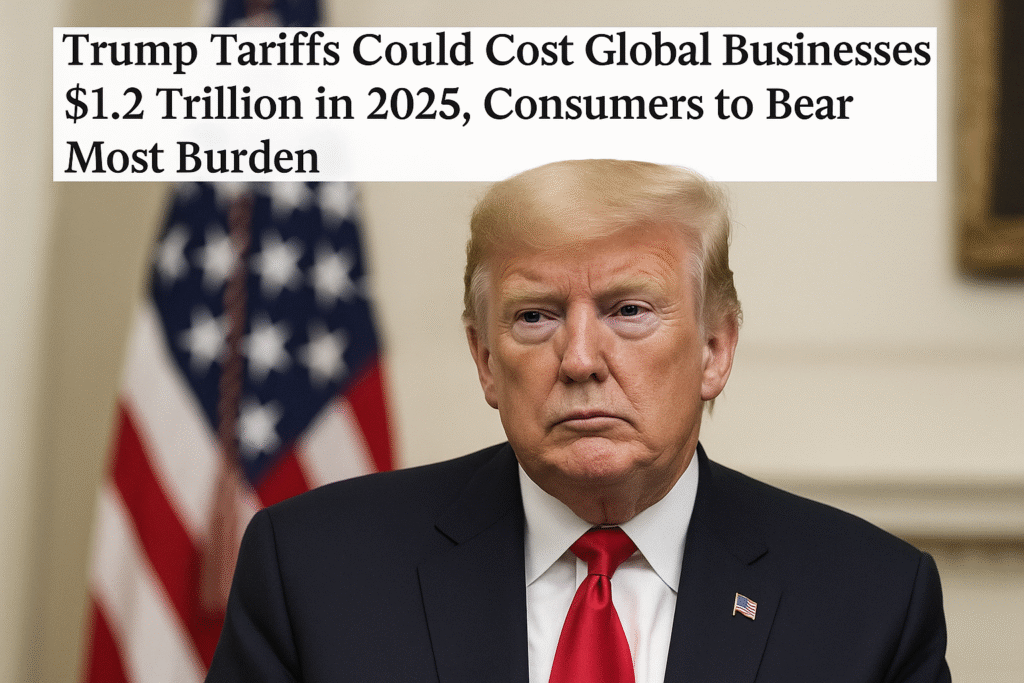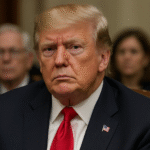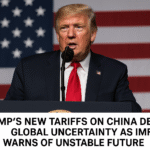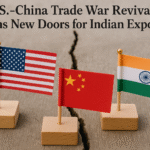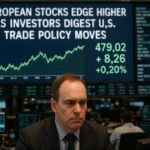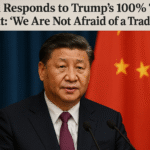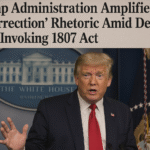By Harshit, Washington, D.C. | October 19, 2025 10 AM EDT
S&P Global Estimates Massive Tariff Impact
President Donald Trump’s tariffs are projected to cost global businesses more than $1.2 trillion in 2025, with the majority of the cost ultimately falling on consumers, according to a new analysis by S&P Global.
The analysis, released Thursday in a white paper, draws on data from approximately 15,000 sell-side analysts across 9,000 companies, integrating proprietary research indexes to assess the cumulative effect of Trump’s tariff policies.
“The sources of this trillion-dollar squeeze are broad. Tariffs and trade barriers act as taxes on supply chains and divert cash to governments; logistics delays and freight costs compound the effect,” said Daniel Sandberg, co-author of the report. “Collectively, these forces represent a systemic transfer of wealth from corporate profits to workers, suppliers, governments, and infrastructure investors.”
Consumers to Shoulder Two-Thirds of Costs
The S&P Global report challenges claims from the White House that foreign exporters would bear the brunt of tariff costs. Instead, analysts found that only one-third of the cost is expected to fall on companies, while two-thirds will be passed to consumers, even under conservative estimates.
The report breaks down the figures as $907 billion in costs to covered companies, with the remainder affecting uncovered firms, private equity, and venture capital.
“With real output declining, consumers are paying more for less, suggesting that this two-thirds share represents a lower bound on their true burden,” said Sandberg, who co-wrote the paper with Drew Bowers, a senior quantitative analyst at S&P Global.
White House Defends Tariffs
The administration continues to defend the duties as part of a broader strategy to restore a fair trade balance.
“While Americans may face a transition period from tariffs upending a broken status quo that has put America Last, the cost of tariffs will ultimately be borne by foreign exporters,” said White House spokesman Kush Desai. He added that companies are already adjusting supply chains, including onshoring production to the U.S., to mitigate tariff effects.
Implications for Federal Reserve Policy
The size of the tariff-induced cost and its distribution between businesses and consumers has implications beyond corporate profits. Federal Reserve officials have noted that tariffs may act as a one-time price shock rather than a persistent inflationary driver.
S&P Global’s researchers found analysts generally share this view. The consensus anticipates a 64 basis point contraction in profit margins in 2025, fading to 28 basis points in 2026, and 8–10 basis points by 2027–28. (One basis point equals 0.01%.)
“In effect, 2025 locked in the hit; 2026 and 2027 will test whether the market’s optimism about re-equilibration is warranted,” the report noted. “For now, consensus envisions a world where margins eventually recover to pre-tariff trajectories.”
Supply Chain and Market Dynamics
Trump’s tariffs, first implemented in April with 10% duties on all U.S. imports and country-specific reciprocal tariffs, have been layered with additional levies on items ranging from kitchen cabinets to autos and timber.
The S&P analysis highlights the May removal of the “de minimis” exception for goods under $800 as a critical inflection point. Previously, low-cost items bypassed tariffs, but eliminating the exemption significantly increased the scope of impacted goods.
Sandberg emphasized that while supply chain disruptions and increased shipping costs have shaken markets, they are potentially transitory frictions, not permanent structural drains on corporate profitability.
“In the optimistic scenario, the Trump administration’s tariff agenda and the resulting supply chain realignments are viewed as temporary turbulence,” he said. “Companies may adapt through technology, cost discipline, and reshaped global value chains.”
Geopolitical and Trade Risks Ahead
The analysis also notes that the ongoing U.S.-China tensions, particularly over rare earth materials, could amplify the cost impact. How the Trump administration navigates future retaliatory measures will likely shape both corporate profit margins and consumer prices globally.
As the year unfolds, businesses and policymakers will be watching closely to see how effectively firms adapt and whether the tariffs’ costs truly remain temporary or evolve into lasting structural challenges.

